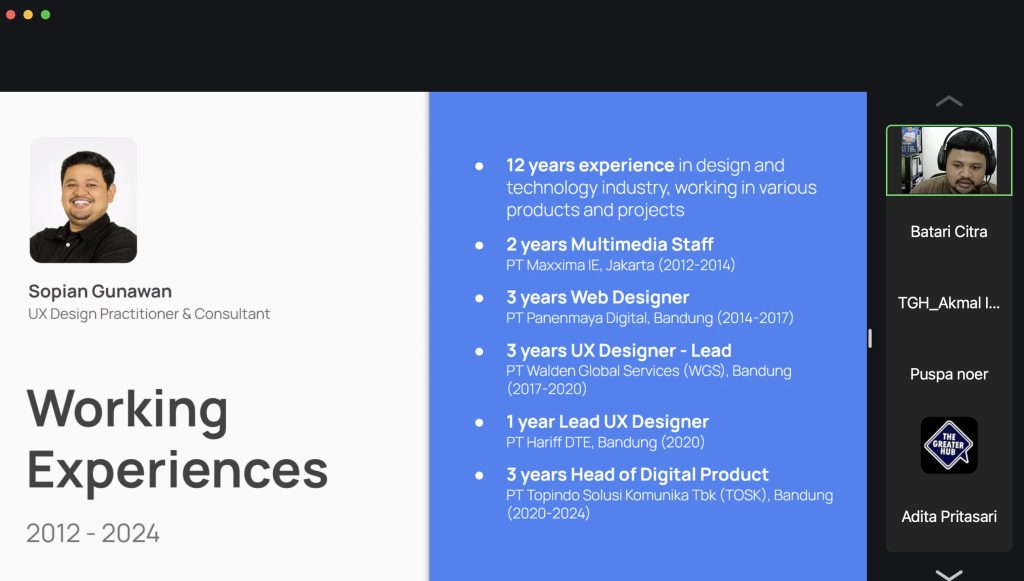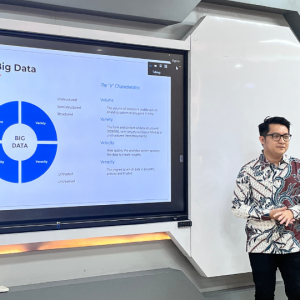Sopian Gunawan, a UX Design practitioner and consultant, shared his in-depth insights into digital innovation and product strategy at The Greater Hub SBM ITB event (24/10). Sopian currently leads product design and digital strategy at Topindoku. He focuses on activating local communities with innovative online-to-offline solutions, aiming to create impactful digital experiences and drive growth in the ever-changing digital era.
According to Sopian, effective user experience (UX) design must address user needs, align with business goals, and account for technical limitations. He emphasized that the foundation of UX design includes user research, persona development, information architecture, and usability testing to ensure products are relevant and high quality.

In the initial ideation stage, Sopian recommends choosing a product or service idea that addresses issues within one’s field of expertise, enabling faster progress. The primary goal of this stage is to validate user problems, uncover business opportunities, and generate innovative ideas. Key steps in ideation include user research, defining problem statements, brainstorming, aligning user needs with business goals, and employing a priority matrix. The outcomes typically include user personas, empathy maps, customer journey maps, and user stories.
In the Minimum Viable Product (MVP) development stage, Sopian highlighted the importance of creating an early product version with core features to address user needs and gather feedback. The MVP approach focuses on quick validation, reducing development risks, and collecting real user input. Key steps in MVP creation include identifying essential features, developing a prototype, launching the MVP, and conducting rapid iterations based on feedback.
Once a product is validated in the market, the startup moves into the scaling phase, where the focus shifts to user growth, product optimization, and market expansion. Recommended steps in scaling include refining UX and product functionality, automating technological infrastructure, expanding features, and maintaining ongoing monitoring.
Sopian also addressed challenges in the ideation and scaling phases, such as making assumptions without data, difficulties understanding user needs, and rising design complexity. Suggested solutions for the ideation phase include customer discovery, persona development, design thinking, and guerrilla testing. For the scaling phase, he recommended using design systems, component-based design, and performance optimization.





